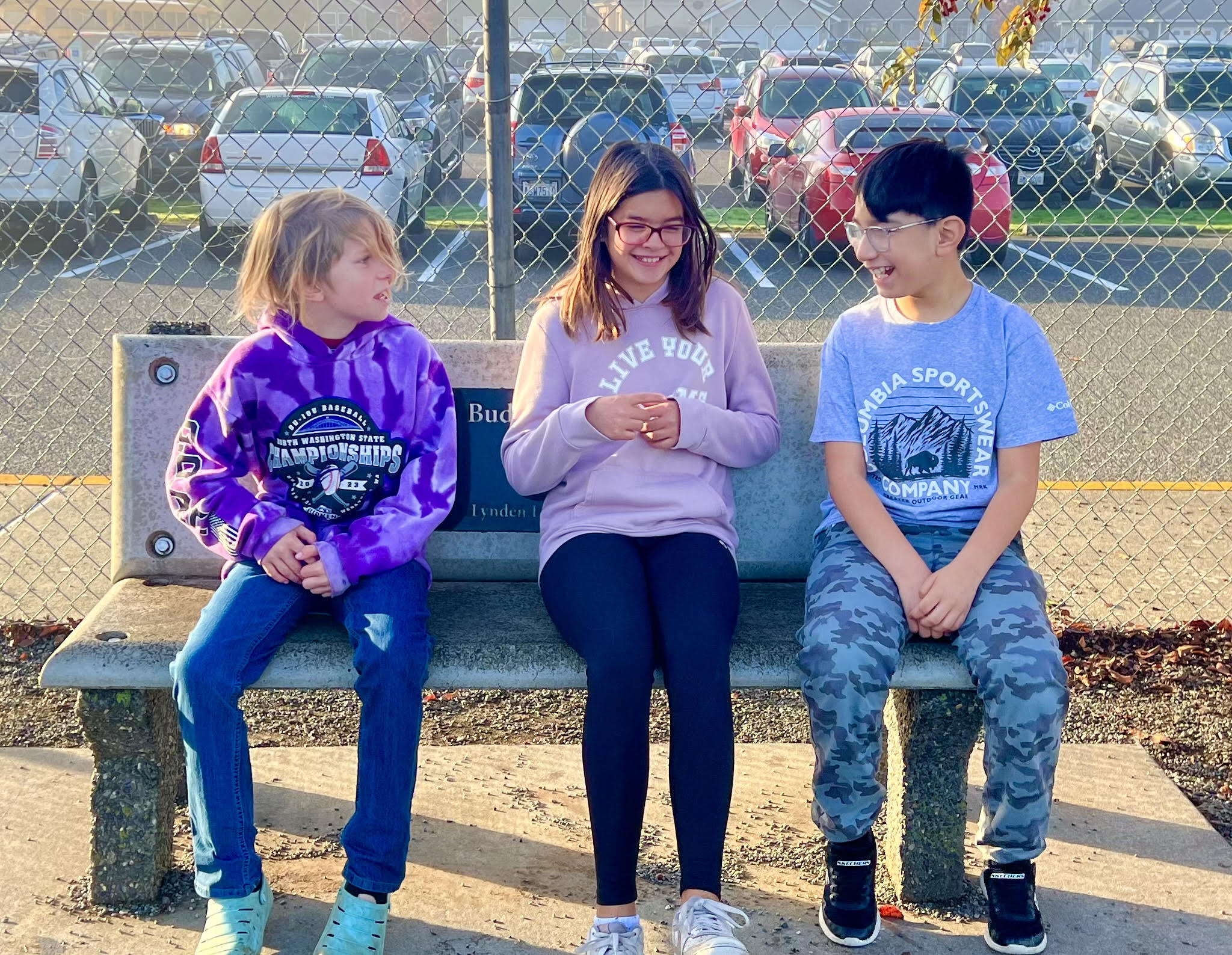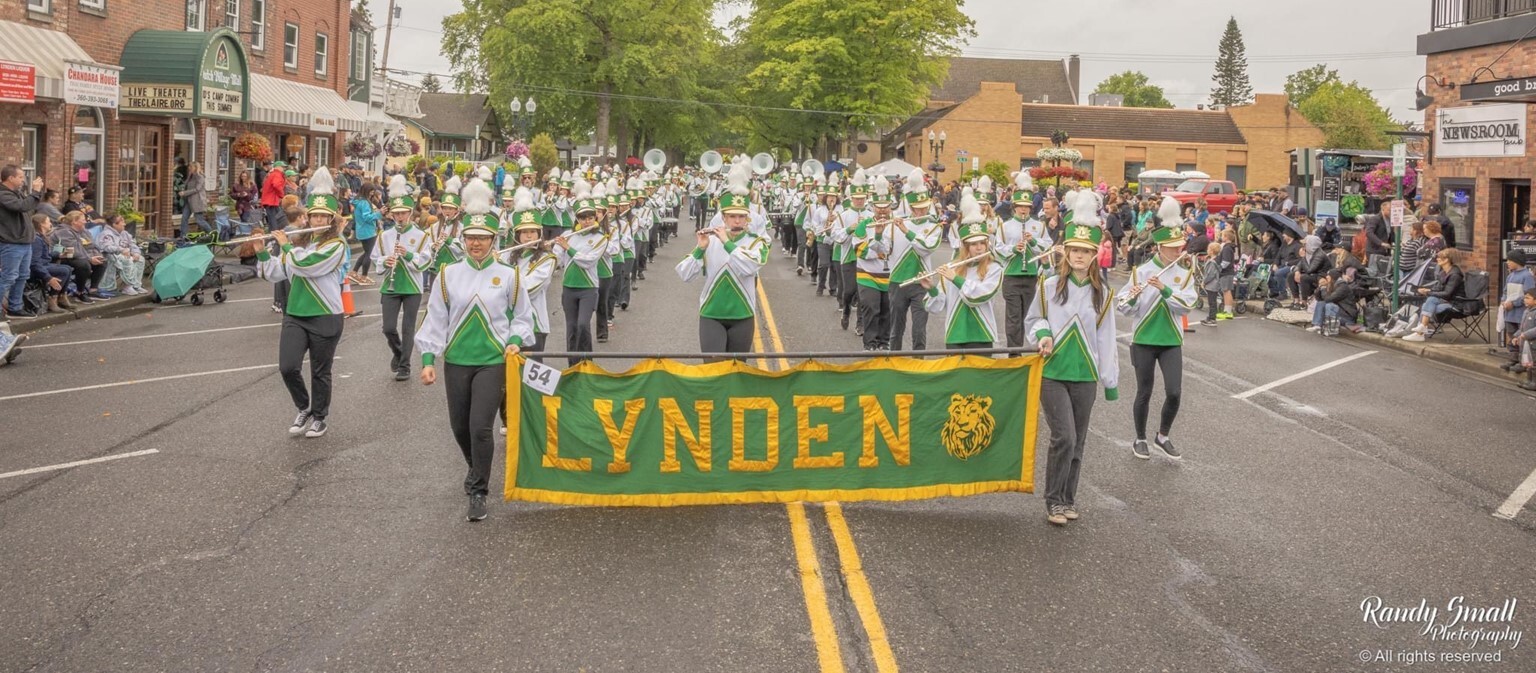
The Power of a Buddy (Bench)
In a school of hundreds, individual students may at times feel a little lost or lonely. There’s a bench for that.
In an effort that’s been thriving at all three Lynden elementary schools for years—some longer than a decade—the Buddy Bench Program extends support to students who may feel a little lost. It provides them a place to be seen.
“The purpose of the Buddy Bench was to help give a physical place for kids to meet new friends, to sit when they needed someone to play with,” says Tausha Caldarella, Fisher counselor. “It helped to create a sense of belonging and community amongst students.”
The Buddy Bench, located outside where students participate in recess, gives students who are quiet, shy or lonely the chance to connect with a potential friend, says Tanya Robinson, Bernice Vossbeck counselor. “The idea is that when a student feels lonely or left out, they sit on the bench, signaling peers that they would like to engage with someone.” Other students are encouraged to keep a watchful eye on the bench and when they see a student there, invite them to join their group or game.
“The kids really took it to heart,” Robinson says. “They very intentionally watch for people to go sit on the bench, talk to them, and invite them to play. The student who initially sat down would be whisked off to join a game.”
The physical iterations of the benches have taken differing forms over the years at the various schools. Some benches have needed replacing and others have turned into something completely different. The evolution at Fisher has turned what was once a traditional bench into round picnic tables with benches, a solution that fits the needs of both the students and the community after hours and still maintains the purpose of the Buddy Bench Program.
“Kids who normally would be sitting by themselves or just talking with one student has become a group of students finding commonality, finding friendship, belonging and community,” Caldarella says.
Giving students a place to go during recess has opened fresh connections throughout the school. “We wanted students to have the ability to ‘ask’ others if they can play in a safe way,” says Elizabeth Grant, Isom counselor. “Students know that if someone is sitting on the Buddy Bench, they want to be included at recess. It is used often, and students know to look for students sitting on it.”
The supervisors at Isom report, Grant says, that younger students often use the bench more. It also allows the supervisors to support students who my need help building friendships at recess.
Robinson says the evolution of the Buddy Bench concept has been organic over the years. Now she sees, at times, when one student sits only to have another soon join and the two strike up a conversation. Sometimes fresh connections are made between two students who wouldn’t have otherwise united.
Bernice Vossbeck also has a Peace Patrol, the school’s version of conflict managers, where students are trained to manage conflicts and remain proactive in seeking out students who may seem lonely, such as a student sitting on the Buddy Bench. “The Buddy Bench is the first place Peace Patrol has been told to look,” Robinson says. “If they see a student sitting on the bench they go over and invite the student to join the game they are organizing.”
The Buddy Bench is a concept that now permeates the entire school. “It is exciting to see how it has been so effective for kids,” Caldarella says, “but how also this concept is growing amongst the community who come to our school during the weekends or evenings to congregate at the tables and building community and belonging.”
“It’s a great tool to help kids, but one of many we implement to support students’ social-emotional development,” Robinson says. “Personally, I believe that although the kids may not need the bench a lot, knowing it’s there as a backup is comforting.”


